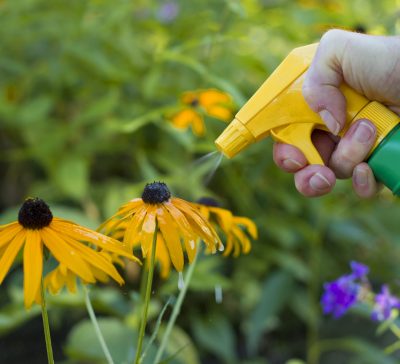






If you have ever perused a pesticide label, you might be familiar with the term ‘adjuvant.’ What are herbicide adjuvants? Broadly, an adjuvant is anything that is added to enhance pesticide effectiveness. Adjuvants either improve chemical activity or application. Many are added just to help the chemical components adhere to leaves while others increase the solubility of the product. It can be confusing to unravel herbicide spray adjuvants and their properties, but we’ll do it together and make some sense of these important additives.
Adjuvants are common additives to many types of chemical plant formulas. You can find them in both herbicides and pesticides. Adjuvant use with herbicides perform as wetting agents, solvents, stickers, stabilizers, spreaders, and penetrants. Adjuvants are the catalyst that makes the chemical formula better, faster and more useful. An herbicide adjuvant guide should help sort out the various types and their functions.
Many of us are familiar with surfactants, some of which are herbicide spray adjuvants. In technical jargon, a surfactant reduces surface tension between the droplets and the leaf surface. They are essentially wetting agents that help the chemical adhere to the leaf surface. Without them, the droplets would simply roll off and not get absorbed into the plant. There are four main types of surfactants that are adjuvants:
Among the adjuvants there are three main classes used in horticulture:
Choosing your adjuvant will start with reading the herbicide or pesticide label. The wrong adjuvant can become a bane rather than a boon if applied to plants. Severe problems can happen in the wrong conditions, wrong species and incorrect adjuvant. In large scale crop situations, nonionic surfactants instead of oil are recommended to prevent the potential of widespread damage.
Read the herbicide label carefully for information on the recommended percentage of surfactant active ingredient. Most will list 75 percent. Chemical formulas that require adjuvants will tell you which and how much in the label. Remember, adjuvant use with herbicides is supposed to support the action of the purchased formula.
If you can’t find the information in the package directions, call the formula’s manufacturer and find out for certain which and what concentration of adjuvant will boost that particular product.
Copyright © www.100flowers.win Botanic Garden All Rights Reserved